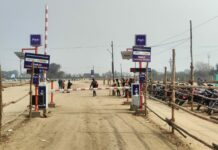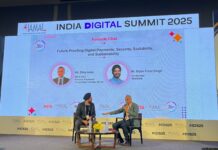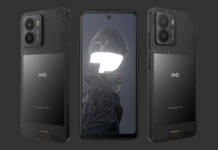Intel India, in association with Department of Science and Technology, Government of India and CII today inaugurated the Initiative for Research & Innovation in Science 2013 (IRIS 2013), which aims to nurture science and scientific research amongst young Indian innovators. IRIS aims to recognize and rewards students’ outstanding projects and originality of thought.
The 4 day event was inaugurated by Shri. Kimmane Ratnakar, Honourable Minister for Primary and Secondary education,Government of Karnataka, Ms Kumud Srinivasan, President-Intel India and Dr. D K Pandey, Scientist-NCSTC, Department of Science & Technology. Also present were Dr. Raj Kumar Khatri, Principal Secretary, Primary & Secondary Education, Karnataka, Ashutosh Chadha, Director-Corporate Affairs Group, Intel South Asia and officials from Ministry of ICT, and Department of Science and Technology. A special video-conferencing session was organised with Mr. Sam Pitroda, Chairman, National Innovation Council, Adviser to the Prime Minister of India on Public Information Infrastructure and Innovations.
In its 7th year now, IRIS receives innovative project entries from government and private school students across the country. 200 children (126 projects) were selected this year from direct entries and from the affiliated fairs after several rounds of evaluation and screening. These shortlisted projects will vie for national honors across 17 categories[1], being evaluated on research merits. Winning projects go on to represent India at Intel ISEF 2014 in Los Angeles, United States. In addition, this year, the best IRIS 2013 project will also receive the Sam Pitroda Award for Research and Creativity– SPARC. Total prize money at Intel ISEF 2013 is more than US$4 million in prizes and scholarships.
Commenting on the occasion, Shri Kimmane Ratnakar, Honourable Minister for Primary and Secondary education, Govt. of Karnataka said, “Economically, the significance of emerging markets like India is constantly increasing. One of our most important tasks is to nurture young talent and provide access to international platforms. I appreciate this collaborative approach by Intel, CII and DST for empowering young innovators with insights and resources to advance their discoveries that can make a difference to the society”.
Till 2013, a total of 73 Indian students have won 87 awards and accolades at Intel ISEF competing against more than 6 million high school students from across the world. Winners at the Intel ISEF not only win laurels for the nation but also get the opportunity to have a minor planet named after them. From 1999-2013, 16 students from India have had the unique honour of having minor planets named after them.
“It’s very encouraging to see this tech-savvy young generation focused on innovations that solve complex problems. As an industry, we need to act as a catalyst for this generation to help create disruptive technologies that can have a positive impact on people’s lives,” said Ms Kumud Srinivasan, President, Intel India. “To this effect, Intel is making efforts to help mentor these young scientists and expose them to global opportunities in Intel ISEF.”
Four mega national level fairs are now affiliated with IRIS 2013 making it the largest research-based science fair in the country. With these affiliations, IRIS provides a broader platform and opportunity for young students to compete for prizes and scholarships at an international level. The four affiliated fairs are:
1. National Children Science Congress (NCSC) – Organized by the National Council for Science & Technology Communication, Department of Science & Technology, Government of India, the NCSC reaches out to approximately 1.5 million students from ages 10 to 17 every year. After a thorough scrutiny at district and state levels, about 500 children take part in this five day long deliberations and fun-filled science activities.
2. Science Fair by National Council of Science Museums (NCSM) is organized every year across 4 zones and reaches out to 20,000 students per year
3. Jawaharlal Nehru Science Fair by National Council of Educational Research & Training (NCERT) reaches to approximately 5 million students. NCERT organizes the exhibition in two phases. In the first phase, exhibitions are held in each and every state and union territory from the district, to the state level. In the second phase, the best exhibits selected from the entries of the State Level Science Exhibitions are put on display at the National Level Exhibition.
4. Central Board of Secondary Education (CBSE) Science Exhibition – The Science Exhibition reaches out to all CBSE affiliated schools and impacts 1.5 million students every year. The Science Exhibition is organized at the regional level which then culminates at the National Level.
www.theunbiasedblog.com










